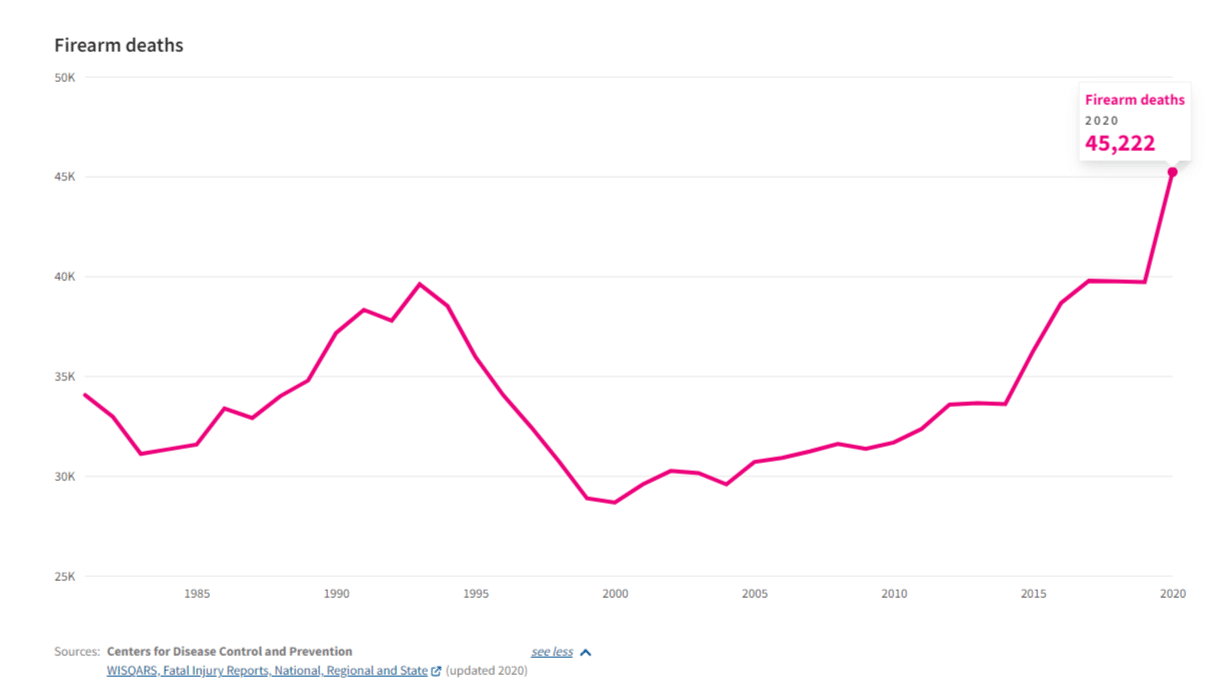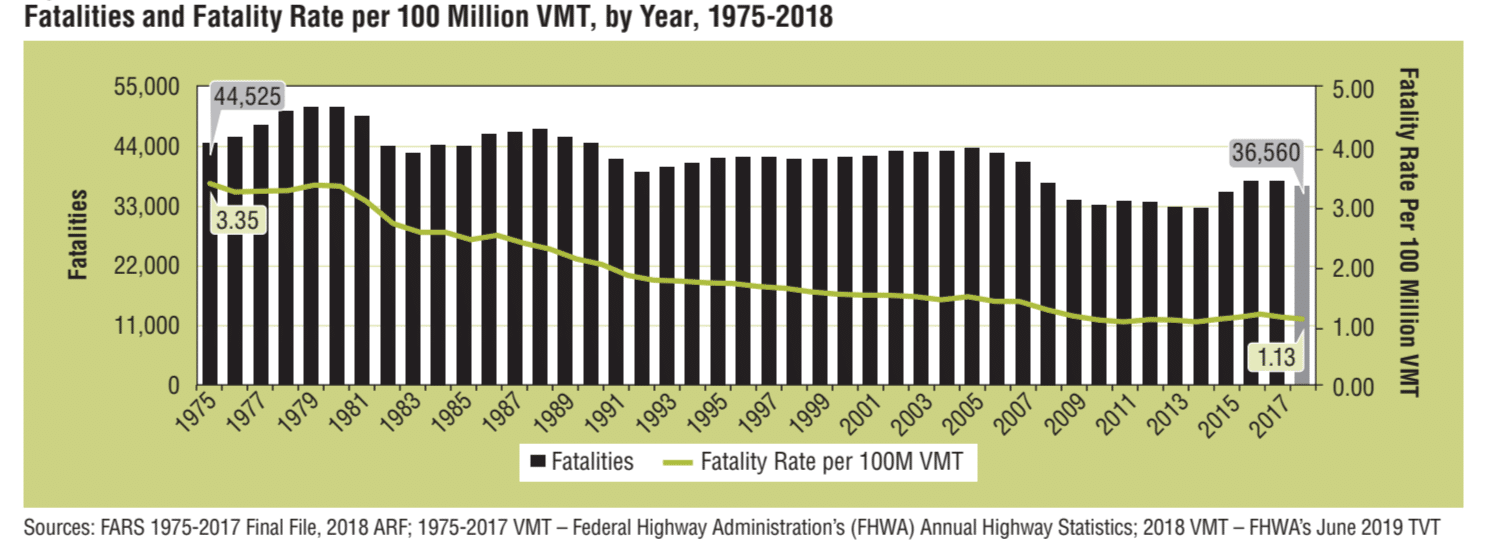To make progress on reducing gun deaths, we need to reframe the problem. In May 2022, after the Uvalde, Texas elementary school shooting, The Atlantic’s Katherine Wu published an article highlighting her conversation with Dr. Megan Ranney, an ER doctor and now incoming dean of Yale’s School of Public Health. In their conversation, Ranney proposed the need to reframe the gun crisis as a public health issue.
As the chart below from USA Facts (a nonpartisan, nonprofit civic initiative), based on CDC data, horrifically highlights, the US hasn’t made progress to reduce the number of deaths by gun violence. In fact, we are trending in the wrong direction.

A recent CNN article also highlighted that the US surpassed 100 mass shootings by the first week of March this year. This didn’t occur until March 19th in 2022, late March in 2021, and not until May in 2018-2020. As a result, it’s imperative to revisit Ranney’s proposal.
Here, I outline why a different approach may benefit us as a nation—at the population level as well as individually. I also propose where we might find alignment, even when we don’t think that’s possible.
Categorizing guns as a political battle isn’t effective
In addition to polarization around the category of abortion, which I discussed last year, guns are yet another example of an innovation problem often described by late Harvard Professor Clayton Christensen: “When we encounter a seemingly unsolvable problem, we’ve likely gotten the categories wrong.” In our current situation with guns, he is absolutely right.
To make progress, we shouldn’t argue about whether we should have more or fewer guns. While national leaders have been having that conversation and using a political categorization to tackle the problem, we’ve seen the number of firearm deaths rise.
Instead of using our existing categorization scheme (gun control vs. gun rights), we need to shift our dialogue to one around preventing the outcomes of injury and death to which guns contribute.
In short, we need to shift from political categorization to public health categorization. And we need to shift from device framing to framing around how we reduce the harm caused by the device.
To save lives, we need a different category. Let’s use one that has worked before.
So what would it look like to tackle the gun death discussion through a public health lens, not a political one? Politics are inherently individual and personalized. People associate themselves with one party or another (or they stand for independence), one ideology or another, one candidate or another, etc.
But public health elevates the conversation above the level of the individual. A public health perspective asks the question, “what’s the greatest good for the greatest number?” Historically, we’ve used public health framing in the US to reduce deaths caused by other mechanisms. One of these is deaths that result from motor vehicle accidents.
As Ranney highlights in her interview with Wu, the US made progress to reduce car crash deaths by around 70% since the 1970s “not by banning cars, but rather by making cars safer, by making drivers safer, and by developing car seats and teaching parents how to use them. There’s a combination of education, engineering, and policy that has been put in place to decrease car-crash deaths.” Similarly, we need everyone—politicians, gun manufacturers, gun retailers, individuals, and communities—at the table to make progress on reducing gun deaths. And our current political framing has proven it won’t get us there.
In public health, the goal is rarely to reduce harm to zero. That’s usually impossible, but the goal is to improve the health of the population as a whole. That’s what we see—progress, not perfection—in the car accident example, as highlighted in the chart below.

Similarly, if we shift the conversation around gun deaths above the level of individual politics and focus on the impact to the population, we just might make some progress.
We need everyone at the table, which will involve finding common ground
We often hear a chorus of backlash against the “thoughts and prayers” some politicians share when yet another mass shooting kills Americans. This comes from the point of view that “thoughts and prayers aren’t enough.” The backlash isn’t factually incorrect, as we have yet to see these statements yield change. But arguing about the best response isn’t yielding improvement either. A more effective mindset shift looks like:
It’s not left (gun control) vs. right (gun rights)
It is, “how can we help as many people as possible live as safely as possible?”.
Ask any parent. I bet they’ll agree—regardless of their political affiliation—that they’d like to send their children to school without wondering if they’ll come home. Similarly, ask any individual and I bet they’ll agree that they’d like to attend a concert, go shopping at a mall, or eat dinner at a restaurant without contemplating their chances of being shot. As a nation, we have the opportunity to come together and provide that peace of mind.
We just have to choose to look beyond ourselves, look through our public health lens, and frame the problem differently. The question is, will we?



